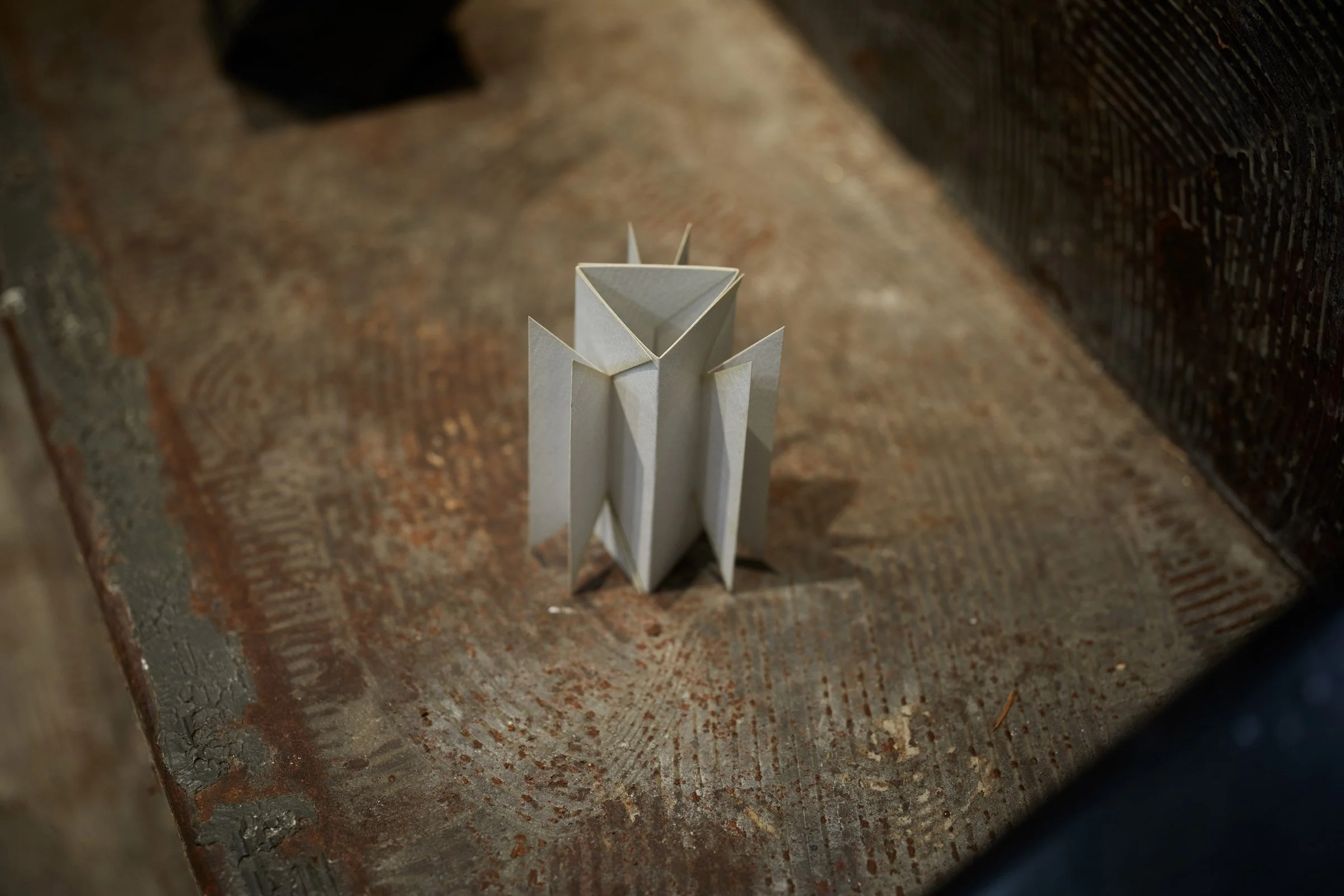Emerging Japanese Designers at Maison&Objet 2022

We get to know the six emerging Japanese designers in the recent Maison&Objet Paris Rising Talent Awards, each of whom was selected by a jury led by Kengo Kuma
Yuri Himuro, SNIP SNAP. Image by Kohsuke Higuchi
It’s par for the course to discover emerging talent at Maison&Objet, the landmark Parisian fair that held its latest edition at the end of March. This year, Japan was in the spotlight, with the country highlighted in the fair’s Rising Talent Awards, an exhibition of emerging designers handpicked by a jury of industry experts. ‘The Rising Talent Awards are a crucial springboard to help up-and-coming design talents break onto the global stage,’ said award-winning architect Kengo Kuma, who led the awards’ jury. In his statement he also noted that although each of the designers has their own field of expertise, ‘they’ve all embraced a multidisciplinary approach to design’, an observation that set the tone for this year’s showcase. Here we get to know that the six Japanese designers from this year’s Rising Talents Awards.
Text / Kissa Castañeda
Kodai Iwamoto, PVC Handblowing Project. Image by Kodai Iwamoto
Kodai Iwamoto
Upcycling is nothing new, but Kodai Iwamoto takes the concept in a surprising direction. Following the Japanese notion of celebrating imperfections, the designer works with ordinary materials and transforms them into ethereal creations. In his PVC Handblowing Project, Iwamoto applies traditional glass-blowing techniques to PVC, a mundane yet modern material. ‘I’m interested in combining the opposing characteristics of mass production and the natural hand-making process into one product,’ he says. For his Pari Pari series, a project that began with his research on traditional wood-crafting tools, Iwamoto used a traditionalJapanese method of making wooden shingles by cutting logs with a machete, resulting in thin wooden sheets with a distinct uneven, organic feel.
Haruka Misawa, Doshi. Image by Masayuki Hayashi
Haruka Misawa
Growing up surrounded by shoji screens and origami sparked Haruka Misawa’s early fascination with paper. For her Doshi (‘paper in movement’) project, she makes paper dance and fly almost as if it has a will of its own. ‘When I thought about adding a new function to paper, I imagined what kinds of behaviour would be un-paper-like,’ Misawa explains. ‘By controlling the shape and size of paper and its relationship to a magnetic force, I was able to create many types of movements such as rising and swaying.’ In the future, the designer hopes to scale up the idea of making kinetic paper move by creating an installation in a larger space. ‘Our goal is to create something that transcends language barriers.’
Satomi Minoshima, Skin Tote. Image by Ronald Smits
Satomi Minoshima
Intrigued by skin, Satomi Minoshima began exploring the possibilities of creating objects inspired by the human body’s largest organ. In her Skin Tote project, the designer worked with silicone typically used for prosthetics to mimic the texture of human skin. Although highly conceptual, the project holds a strong imprint from its maker as each piece was individually cast and coloured.
Minoshima is also looking at new ways to approach colour, straying away from the usual creative process that begins with a shape and is then followed by adding colour. ‘I’m researching whether it’s possible to derive texture and shape from colour,’ she says. ‘Colour has no substance, but its elements are intricately intertwined and can have various meanings in terms of cultural, social and psychological aspects.’
Yuma Kano, Rust Harvest. Image by studio yumakano
Yuma Kano
Yuma Kano finds beauty in the everyday, but also in decay. His material of choice is rust, a matter often linked to damage and destruction. Captivated by its kaleidoscopic patterns, the designer initiated Rust Harvest, a project in which he rusts metal sheets through different processes and then combines them with acrylic resin to form a new material. ‘I specialise in designs and ideas that give new value to things that have no value,’ Kano says. Another project, ForestBank, is inspired by Japan’s deforestation crisis. Here Kano combined readily available materials such as bark, branches and seeds with acrylic resin to create a terrazzo-like material.
Yuri Himuro, Bloom. Image by Kohsuke Higuchi
Yuri Himuro
Yuri Himuro aims to create new relationships and possibilities between people and textiles. Through her project SNIP SNAP, she invite viewers to engage with the double-layered fabrics of a ‘mini tapestry’ and cut into them, each cut revealing a new, unique story. This project inspired Cultivate, a rug design created in collaboration with Milan-based rug brand cc-tapis. Himuro recently acquired a jacquard loom from Norway for her workshop, which she intends to use on future projects. ‘I’m currently looking at the problem of a large surplus of coloured yarn, which was left over from the textile development process, says Himuro. ‘From these yarns, we developed a new blanket with different colour combinations thanks to its unique structure.’
Baku Sakashita, The Phase Collection. Image by Baku Sakashita
Baku Sakashita
Describing himself as an artisan and designer, Baku Sakashita says that he ‘thinks through his hands’. In his SUKI lighting collection, he combined tengujoshi (a semi-translucent paper) and stainless-steel wire to make mobile-like lighting sculptures that produce geometric, moving shadows. ‘I glued paper on a wire structure when the humidity was relatively high so that the paper would shrink as the humidity reduced,’ the designer explains. ‘This was inspired by the shoji screen-making technique of mizubari, which involves spraying water on paper after placing it in a wooden frame to stretch it.’












